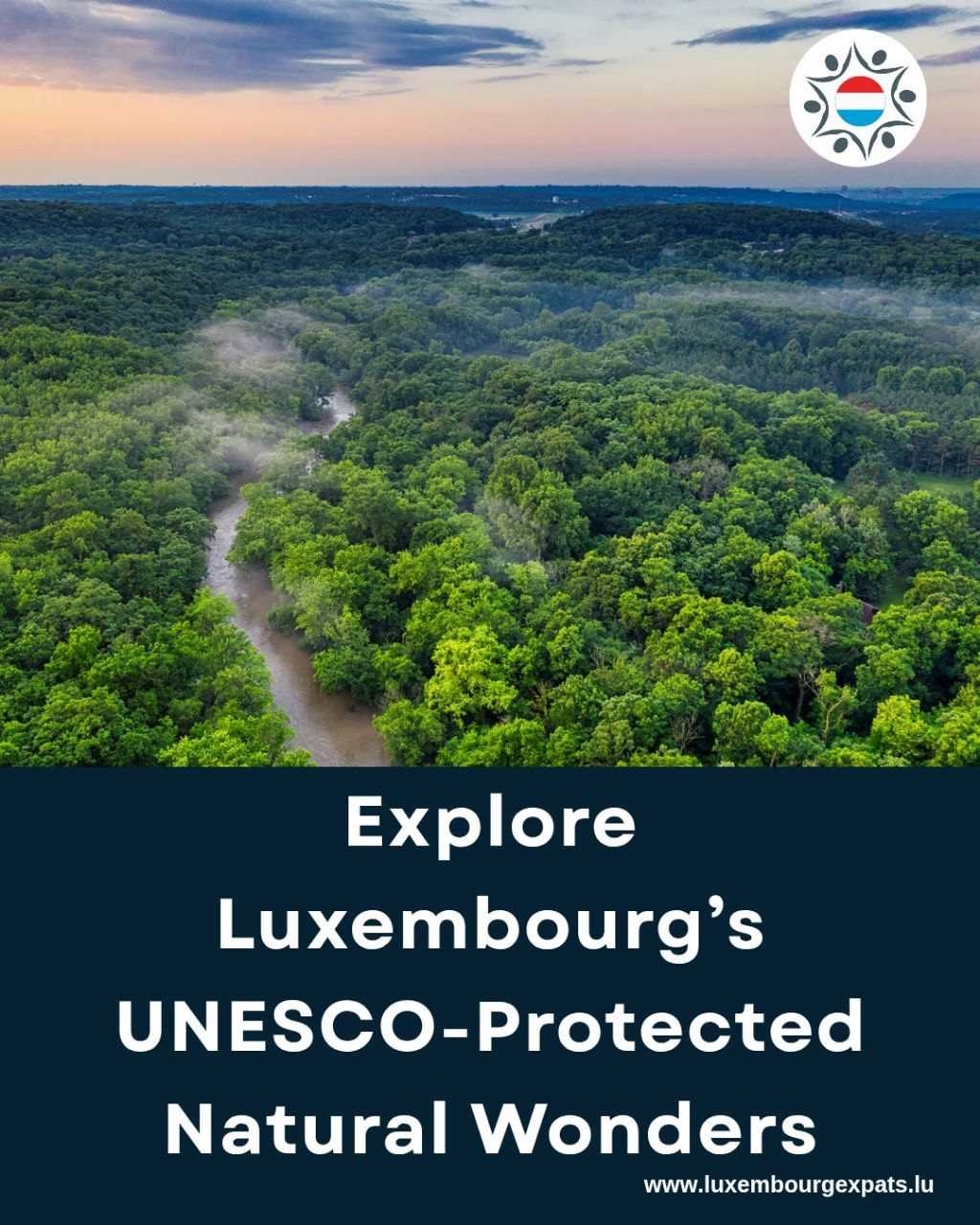Explore Luxembourg’s UNESCO-Protected Natural Wonders
LuxembourgPosted on 17 November 2025 by TeamLuxembourg is widely known for its cultural heritage, but the country also holds two extraordinary natural treasures recognised by UNESCO: the Minett UNESCO Biosphere in the south and the Natur- & Geopark Mëllerdall in the east. Both sites highlight the deep connection between people, landscapes and centuries of environmental change, offering residents and visitors a chance to experience nature through a unique blend of history, geology and sustainability.
The Minett UNESCO Biosphere, officially recognised in 2020, sits in Luxembourg’s Red Rocks region — once shaped by iron mining and heavy industry. For decades, this was the steel heart of the country, drawing workers from abroad, especially Italy, and leaving behind vast industrial sites. Today, the region has undergone a major transformation. More than 600 hectares of former industrial wasteland are being revitalised, giving way to thriving habitats and protected natural areas. Covering 200 km² and home to a third of Luxembourg’s population, the Minett region showcases how human activity can evolve into a model for sustainable development and ecological renewal.
One of the best ways to explore this transformed landscape is on foot. Eleven municipalities form the biosphere, each offering views of cuestas, forests, wet meadows, limestone grasslands and countless ecosystems teeming with biodiversity. The highlight for hikers is the 90 km Minett Trail — a signature route created for the UNESCO application — which spans 10 stages and features 11 architecturally unique lodges for overnight stays. The biosphere’s year-round programme also includes guided activities, workshops and educational events that invite the public to engage with this living landscape.
Further north and east lies a completely different natural world: the Natur- & Geopark Mëllerdall, part of the UNESCO Global Geoparks Network since 2022. Its story begins more than 200 million years ago, when the region was covered by a vast sea. Sandstone layers from this ancient seabed still shape the region’s dramatic cliffs, rock formations and gorges, making the geopark a geological archive of global significance. Today, these landscapes play a crucial role in biodiversity, groundwater supply and the daily life of local communities.
Hiking is the most rewarding way to discover the Mëllerdall. Route 2 of the Mullerthal Trail leads visitors through one of the region’s most stunning landmarks — the Wollefsschlucht, a 40-metre-deep gorge where towering rock walls create a surreal, almost mythical atmosphere. The trails weave through charming villages, many of which offer local products such as Berdorf cheese, showing how local culture is closely tied to its natural surroundings.
The geopark also serves as an open-air classroom, offering activities such as bird walks, children’s nature trails, beekeeping workshops, herb lessons and guided tours on drinking water sources. These programmes not only promote sustainable tourism but also raise awareness about geology, climate change and environmental protection.
Together, the Minett UNESCO Biosphere and the Natur- & Geopark Mëllerdall highlight Luxembourg’s remarkable natural diversity — from industrial rebirth to ancient seas. They show how nature and human history intertwine, inviting visitors to explore, learn and connect more deeply with the landscapes that shape the country.
Read More : Discovering UNESCO's natural heritage in Luxembourg - Luxembourg
Join the community of your own - #1 home-grown LuxExpats app
SignUp Free : luxembourgexpats.lu
I am your contact
Team
Chat









